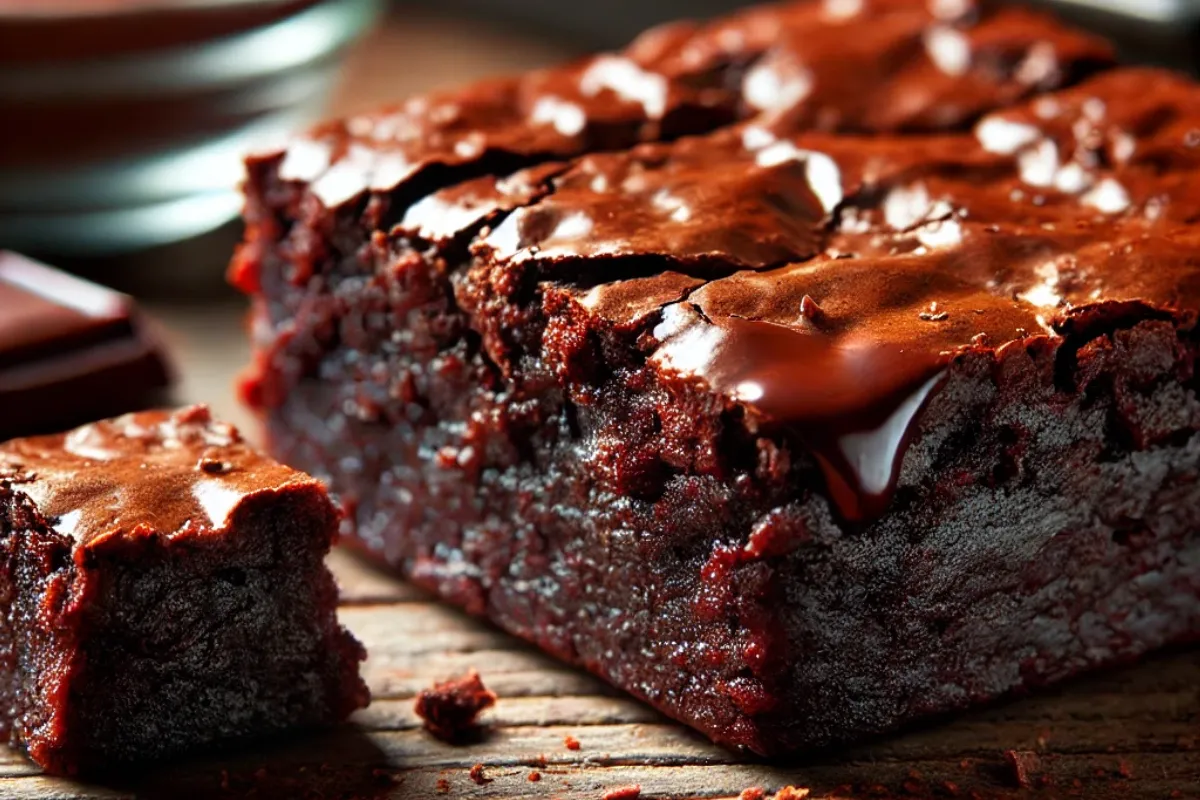Introduction: How to Describe a Brownie Perfectly
When considering how to describe a brownie, the first thoughts are of its rich, chocolatey indulgence. Originating in the United States in the late 19th century, brownies have become a global staple in bakeries, homes, and restaurants. But how do you describe a brownie in detail? Whether you’re a fan of the fudgy, dense variety or prefer a lighter, cakey texture, brownies offer something for everyone.
Physical Characteristics: How to Describe a Brownie’s Texture and Appearance
When describing a brownie’s texture, the first thing that stands out is whether it is fudgy or cakey. The texture of a brownie can range from dense and moist to light and airy, depending on the recipe. A perfect brownie often has a glossy top, a sign of well-dissolved sugar in the batter, and a deep, rich chocolate brown color that hints at the intensity of its flavor.
Key Physical Characteristics to Describe a Brownie:
- Fudgy or Cakey Texture: Dense and moist, or light and airy.
- Glossy Top: A slight sheen, indicating well-mixed sugar.
- Deep Chocolate Brown Color: The rich hue reflects intense chocolate flavor.
For a better understanding of the differences in brownie textures, you can explore Serious Eats’ guide to brownie textures.
Ingredients and Variations: How to Describe a Brownie’s Flavor and Recipe Components
When exploring how to describe a brownie’s flavor, it’s essential to start with the ingredients. The core ingredients include flour, butter, eggs, chocolate (or cocoa powder), and sugar. These ingredients combine to create the iconic taste and texture that brownies are known for. However, there are numerous ways to customize a brownie, such as adding nuts, chocolate chips, or a rich frosting.
For those who prefer a different take on brownies, there’s the blondie, a variation made with brown sugar and vanilla instead of chocolate, offering a delightful twist on the classic brownie flavor.
- Nuts: Enhance texture with walnuts or pecans.
- Chocolate chips: Amplify the chocolate flavor.
- Blondies: A vanilla-flavored alternative to traditional brownies.
Brownies can also be infused with additional flavors like sea salt, caramel, or even coffee for added depth and complexity. For an interesting variation, consider trying the ultimate banana brownie recipe, which blends the richness of chocolate with the natural sweetness of bananas.
For more tips on customizing brownies, check out AllRecipes’ brownie variations.
How to Describe a Brownie’s Taste: Understanding the Flavor Profile
How do you describe a brownie’s taste? The flavor of a brownie is intensely chocolatey, with a balanced sweetness that can vary based on the recipe. A well-made brownie combines a rich chocolate flavor with the right level of sweetness. Often, complementary ingredients like nuts, caramel, or a sprinkle of sea salt are added to enhance the overall taste experience.
- Chocolate intensity
- Sweetness balance
- Complementary flavors (e.g., nuts, caramel, sea salt)
Serving brownies warm with a scoop of ice cream, known as à la mode, is a popular way to elevate their flavor. The contrast between the hot brownie and cold ice cream makes the experience even more indulgent.
To discover some of the best brownie recipes and their variations, visit best brownie recipes.
Serving Suggestions: How to Describe a Brownie’s Ideal Pairings
Brownies are delicious on their own, but they can be even better with the right pairings. For a truly indulgent treat, try serving brownies warm, topped with a scoop of vanilla ice cream (à la mode). Other popular toppings include whipped cream or a dusting of powdered sugar. Brownies also pair well with cold milk, coffee, or even a glass of rich red wine.
Serving Ideas to Describe a Brownie:
- À la mode: Warm brownie with ice cream.
- Toppings: Whipped cream or powdered sugar.
- Pairings: Milk, coffee, or wine.
History of the Brownie: Describing the Origins of This Classic Dessert
The origin of the brownie is as rich as the dessert itself. A famous story credits Bertha Palmer, a Chicago socialite, with creating the first brownie in 1893. She wanted a dessert smaller than a cake but easy to eat, leading to the creation of the Palmer House Brownie, still served at the Palmer House Hotel in Chicago today. The first printed brownie recipe appeared in the Boston Cooking-School Cook Book by Fannie Farmer in 1896, though these early brownies didn’t contain chocolate. It wasn’t until the early 20th century that the chocolate brownie as we know it became popular, with recipes focusing on a richer, fudgier texture.
To learn more about the history of brownies, you can visit The Nibble’s history of brownies.
Cultural Significance: Why Describing a Brownie’s Popularity Matters
In American culture, brownies are more than just a dessert; they are a symbol of home baking and comfort. They are a popular choice for homemade treats and are frequently found in restaurants, cafes, and coffee shops across the country. Brownies have also inspired numerous variations and have been embraced internationally, with each culture adding its unique twist to the classic recipe.
If you’re interested in other creative brownie variations, such as red velvet brownies, these recipes offer a delightful twist on the traditional brownie.
Common Questions about Brownies (FAQs)
What makes brownies fudgy vs. cakey?
The texture of a brownie depends on the ratio of ingredients. Fudgy brownies have a higher fat-to-flour ratio, often using more butter and chocolate, while cakey brownies use more flour and sometimes a leavening agent like baking powder.
Why do some brownies have a glossy top?
A glossy top on a brownie is achieved when the sugar in the batter is well-dissolved before baking. This can be done by melting the sugar with the butter or by beating the eggs and sugar until smooth.
What are the best mix-ins for brownies?
Popular mix-ins include chocolate chips, nuts, and caramel. These add extra flavor and texture to the brownie.
How do you store brownies to keep them fresh?
To keep brownies fresh, store them in an airtight container at room temperature for up to a week. For longer storage, brownies can be frozen for up to three months.
Can you freeze brownies?
Yes, brownies can be frozen. Wrap them tightly in plastic wrap and aluminum foil before placing them in the freezer. Thaw at room temperature before serving.
Conclusion: How to Describe a Brownie
In conclusion, how to describe a brownie involves more than just listing its ingredients or flavor. It’s about capturing the experience—from the first bite of its fudgy, chocolatey goodness to the way it melts in your mouth. Whether you’re enjoying a brownie on its own or dressed up with ice cream and toppings, this beloved dessert continues to be a favorite for all the right reasons. The next time you indulge in a brownie, take a moment to appreciate the rich history, versatility, and pure joy that this dessert brings.

